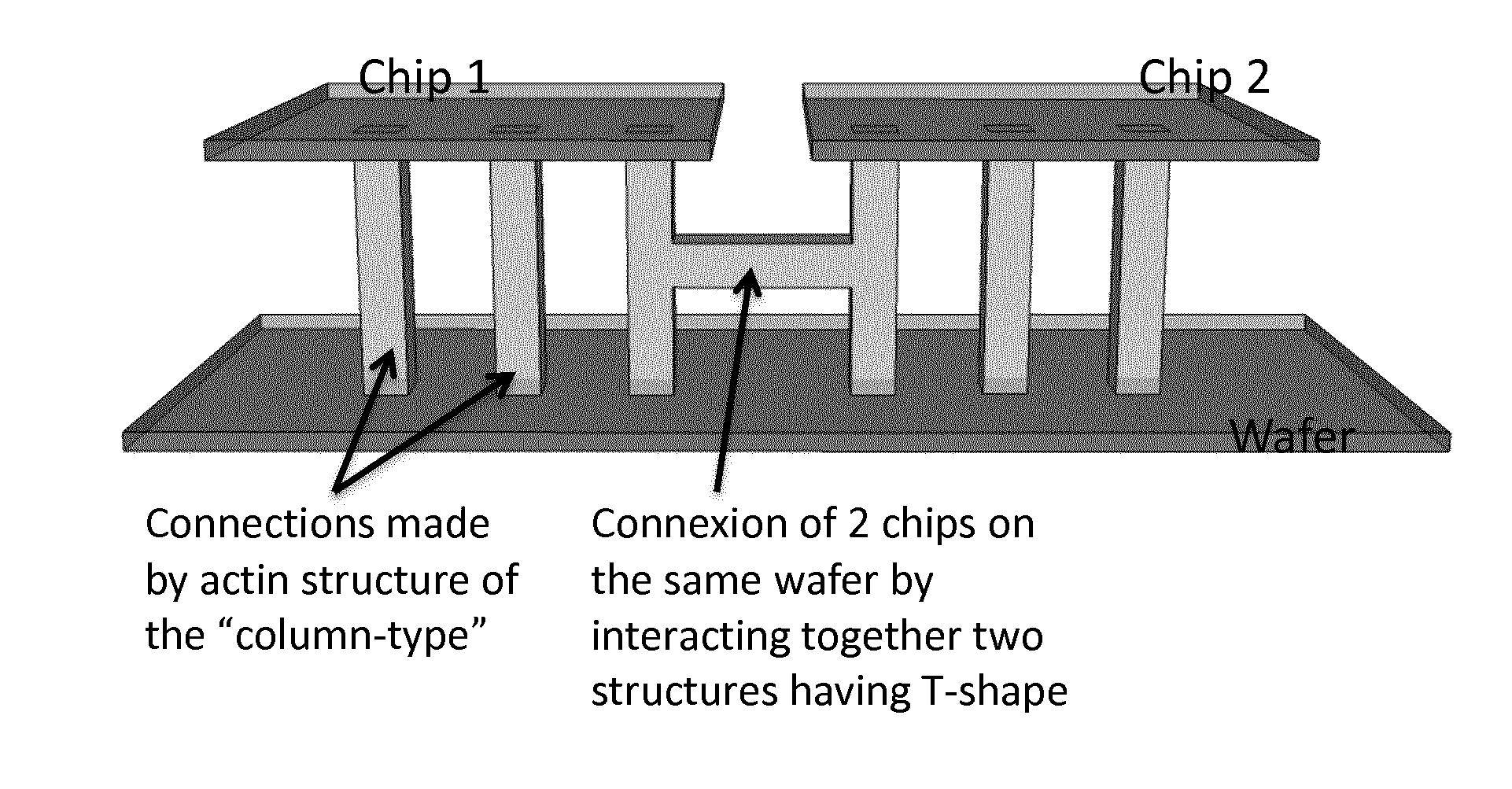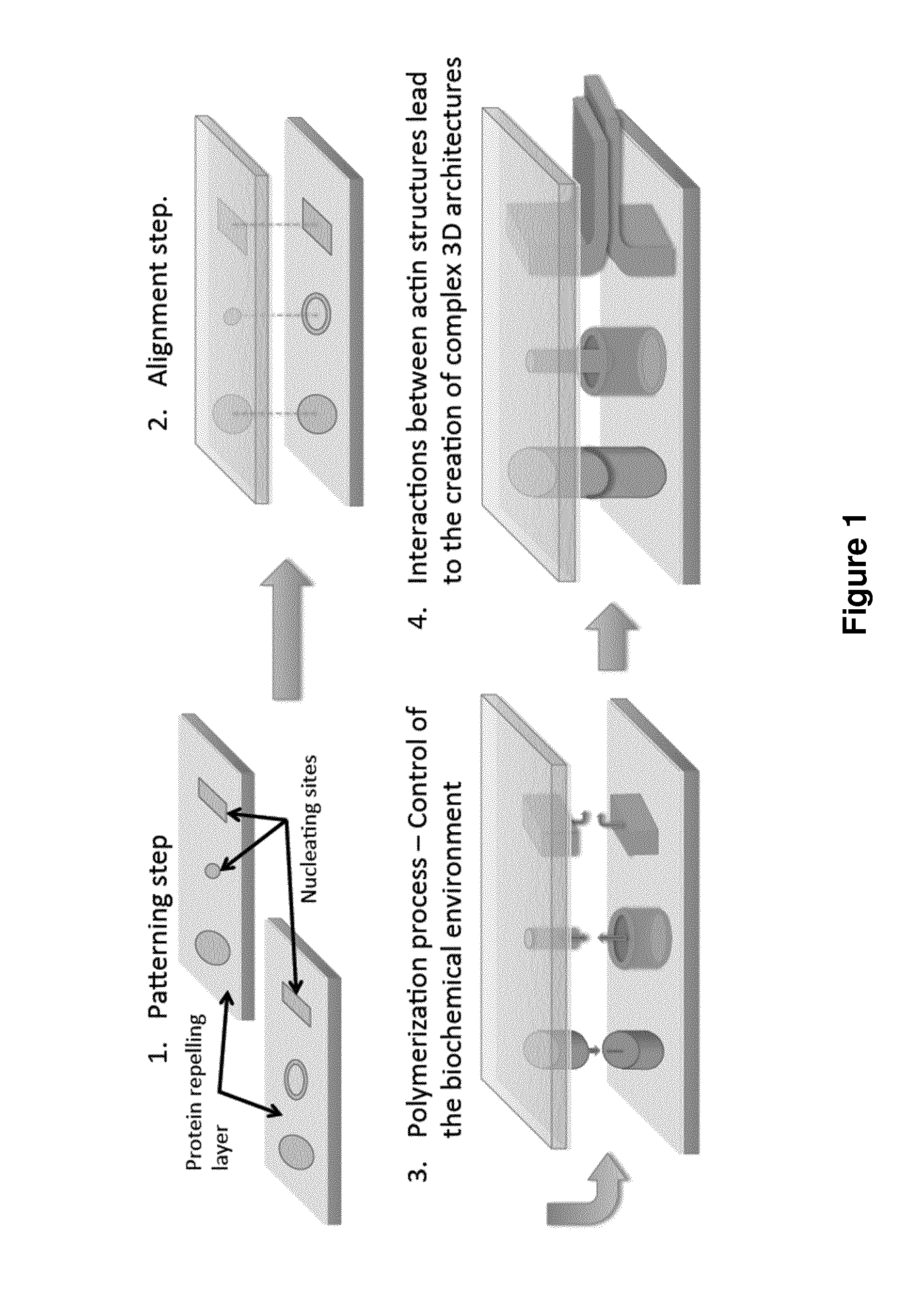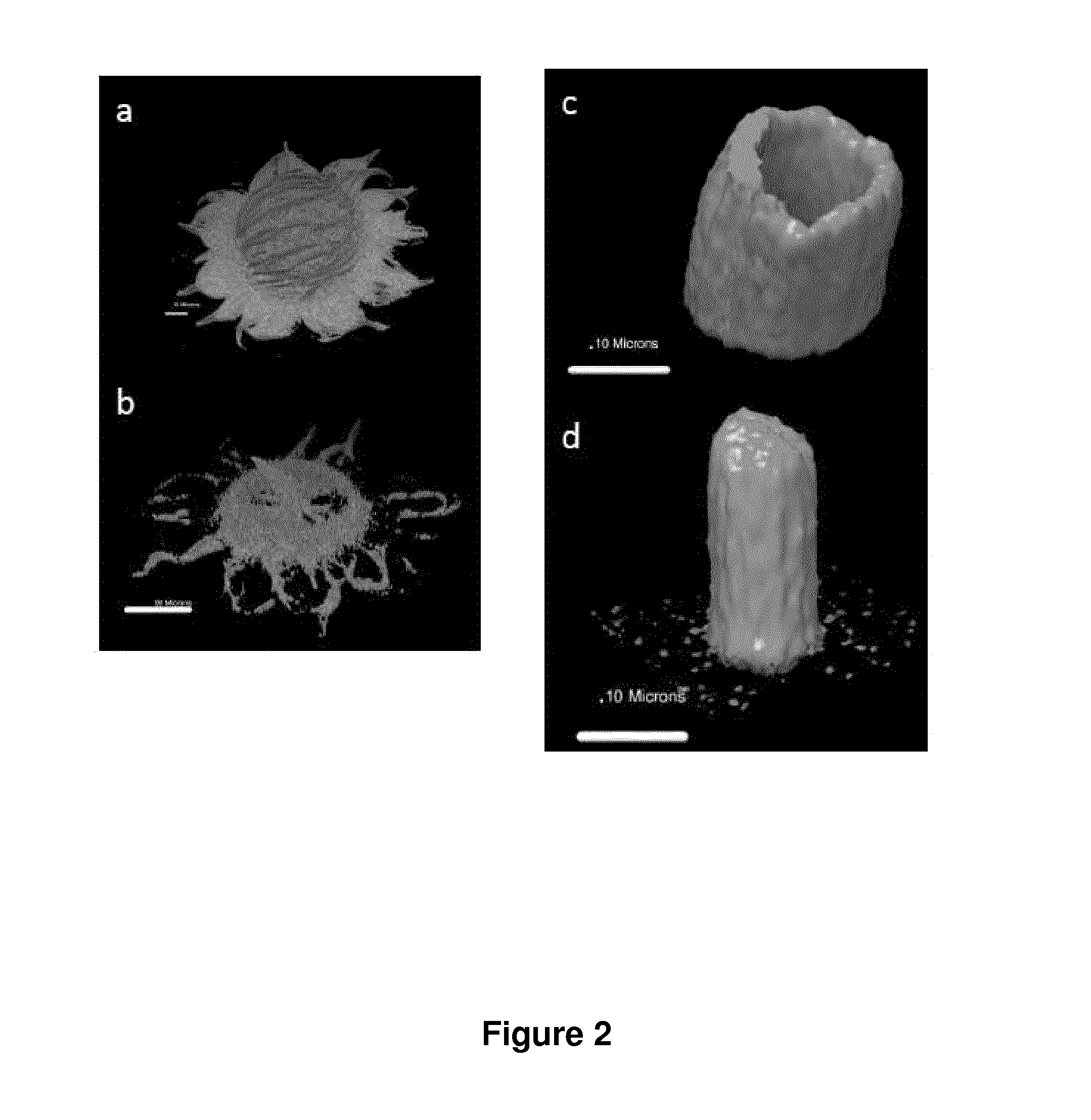Method for obtaining three-dimensional actin structures and uses thereof
a three-dimensional protein and structure technology, applied in the field of microelectronics, can solve the problems of few studies relating to methods for actually preparing three-dimensional protein structures more complex than nanowires, and the method is quite limited, and the technology is believed to remain inappropriate for the large-scale production of microelectronic devices
- Summary
- Abstract
- Description
- Claims
- Application Information
AI Technical Summary
Benefits of technology
Problems solved by technology
Method used
Image
Examples
example 1
“Plug and Receptacle” 3D Connections (See FIGS. 3A and 3B)
[0286]Two clean glass coverslips were made resistant to protein binding by a PLL-PEG treatment. The clean coverslips were first oxidized through oxygen plasma (FEMTO, Diener Electronics, France) 60 s at 30 W. The negatively charged coverslips were then incubated for 30 minutes with a 0.1 mg / mL PLL-PEG (CYTOO, France) diluted in 10 mM HEPES (pH 7.4). The positively charged PLL_PEG molecules were bound to the coverslips through electrostatic interactions creating a protein-repelling layer at their surfaces. After the incubation process, the two glass coverslips were washed with a 1×KMEI buffer to remove the unbound PLL-PEG that is in excess.
[0287]The 1×KMEI buffer is composed of 500 mM KCl, 10 mM MgCl2, 10 mM EGTA and 100 mM imidazole at pH 7 diluted ten times in a G-Actin buffer (2 mM Tris-Cl, 0.2 mM ATP, 0.5 mM DTT, 0.1 mM CaCl2 and 1 mM Na azide).
[0288]The two glass coverslips were then assembled together with one over the o...
example 2
3D Column-Type Structures (FIG. 4)
[0294]Two clean glass coverslips were made resistant to protein binding by a PLL-PEG treatment. The clean coverslips were first oxidized through oxygen plasma (FEMTO, Diener Electronics, France) 60 s at 30 W. The negatively charged coverslips were then incubated for 30 minutes with a 0.1 mg / mL PLL-PEG (CYTOO, France) diluted in 10 mM HEPES (pH 7.4). The positively charged PLL_PEG molecules were bound to the coverslips through electrostatic interactions creating a protein-repelling layer at their surfaces. After the incubation process, the two glass coverslips were washed with a 1×KMEI buffer to remove the unbound PLL-PEG that is in excess. The 1×KMEI buffer was composed of 500 mM KCl, 10 mM MgCl2, 10 mM EGTA and 100 mM imidazole at pH 7 diluted ten times in a G-Actin buffer (2 mM Tris-Cl, 0.2 mM ATP, 0.5 mM DTT, 0.1 mM CaCl2 and 1 mM Na azide).
[0295]The two glass coverslips were then assembled together with one over the other thanks to two double fa...
example 3
Building Blocks Having T-Shape Structure
[0301]Two clean glass coverslips were made resistant to protein binding by a PLL-PEG treatment. The clean coverslips were first oxidized through oxygen plasma (FEMTO, Diener Electronics, France) 60 s at 30 W. The negatively charged coverslips were then incubated for 30 minutes with a 0.1 mg / mL PLL-PEG (CYTOO, France) diluted in 10 mM HEPES (pH 7.4).
[0302]The positively charged PLL_PEG molecules were bound to the coverslips through electrostatic interactions creating a protein-repelling layer at their surfaces. After the incubation process, the two glass coverslips were washed with a 1×KMEI buffer to remove the unbound PLL-PEG that is in excess. The 1×KMEI buffer was composed of 500 mM KCl, 10 mM MgCl2, 10 mM EGTA and 100 mM imidazole at pH 7 diluted ten times in a G-Actin buffer (2 mM Tris-Cl, 0.2 mM ATP, 0.5 mM DTT, 0.1 mM CaCl2 and 1 mM Na azide).
[0303]The two glass coverslips were then assembled together with one over the other thanks to tw...
PUM
| Property | Measurement | Unit |
|---|---|---|
| Length | aaaaa | aaaaa |
| Molar density | aaaaa | aaaaa |
| Molar density | aaaaa | aaaaa |
Abstract
Description
Claims
Application Information
 Login to View More
Login to View More - R&D
- Intellectual Property
- Life Sciences
- Materials
- Tech Scout
- Unparalleled Data Quality
- Higher Quality Content
- 60% Fewer Hallucinations
Browse by: Latest US Patents, China's latest patents, Technical Efficacy Thesaurus, Application Domain, Technology Topic, Popular Technical Reports.
© 2025 PatSnap. All rights reserved.Legal|Privacy policy|Modern Slavery Act Transparency Statement|Sitemap|About US| Contact US: help@patsnap.com



